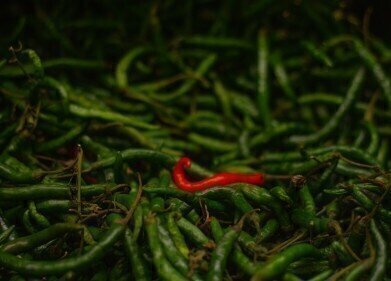Columns (GC)
Are Mosquitoes Getting Stronger? Chromatography Investigates
Oct 21 2016
A recent study shows evidence for the hypothesis of cuticular hydrocarbon (CHC) production in Anopheles gambiae — one of the types of mosquito that cause malaria in Africa. The hypothesis suggested that increased CHC content could be one reason why mosquitoes are becoming more resistant to the various control mechanisms that we put in place.
Although a relatively minor pest in the West — Anopheles are a major cause of suffering in some areas of the world. Although malaria cases have reduced since 2000, in 2015 over 430,000 people died from malaria with an estimated 214 million cases — with Sub-Saharan Africa the focal point of many of these malaria cases and deaths.
Vector control — stop the mosquito
The reduction in malaria cases is partly due to control methods used — with the use of insecticides being the major contributor to the reduction. But mosquitoes are becoming increasingly resistant to the insecticides used, and there are not too many new insecticides to move to. This poses a big risk to the control of malaria carrying mosquitoes.
There are several reasons why mosquitoes become resistant to insecticides — much as the bacterial infections humans get become resistant to our current antibiotics. Misuse of insecticides includes poor spraying technique and poor use of the insecticide at the wrong concentration. The use of counterfeit insecticides is also an issue in preventing the spread of malaria. There is also evidence that mosquitoes are becoming resistant to several different types of insecticide — insecticide resistance is spreading.
Resistance, resistance, resistance
There are three types of mechanism at play in insecticide resistance:
- Behavioural resistance — for example, after DDT was used to control indoor living mosquitoes, an outdoor type became dominant. Or the insects might simply move to the other side of a sprayed leaf.
- Biochemical resistance — enzymes can detoxify the insecticide before it reaches its site of action, known as metabolic resistance. Alternatively, the target site of the insecticide can become modified so that the insecticide cannot bind to the protein or enzyme it is designed to target.
- Physiological resistance — there are many examples of this, including the strengthening or thickening of the body wall to prevent penetration of the insecticide.
Cuticle thickening — blocking the insecticide
In a recent paper in PNAS — a team reports that insecticide resistant mosquitoes have an increased amount of cuticular hydrocarbons (CHC) when compared to non-resistance types. CHC are synthesized from fatty acids by insects and help to stop the insect from drying out. But, they have the additional benefit of helping to prevent the uptake of insecticide.
The team used gas chromatography to show that resistant mosquitoes had an extra 29% of CHC compared to non-resistant mosquitoes. They report finding almost 70 different multicomponent peaks that are related to a wide variety of organic compounds. The ability of GC to analyse multicomponent samples is discussed in the article, Better with Both: Leveraging Polar Selectivity and Polar Inertness using SLB®-IL (i-series) Capillary GC Columns.
Digital Edition
Chromatography Today - Buyers' Guide 2022
October 2023
In This Edition Modern & Practical Applications - Accelerating ADC Development with Mass Spectrometry - Implementing High-Resolution Ion Mobility into Peptide Mapping Workflows Chromatogr...
View all digital editions
Events
Apr 23 2024 Kintex, South Korea
Apr 23 2024 Seoul, South Korea
Apr 28 2024 Montreal, Quebec, Canada
May 05 2024 Seville, Spain
May 15 2024 Birmingham, UK














